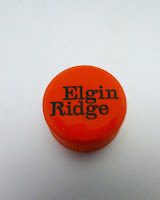International Sauvignon Blanc Day
Three To Try Next Friday
 |
| The beautiful Chenonceau chateau in the Loire area (but on the Cher River, a tributary of the Loire) |
Sauvignon Blanc, possibly now the world’s best known white grape variety, has its annual day in the spotlight this coming Friday when International Sauvignon Blanc Day will be celebrated. We have three examples, all highly recommended, for you to try.
The “secret” of Sauvignon Blanc, known to connoisseurs for decades as the grape used in Sancerre in the Loire, was blown apart by the winemakers of New Zealand, of Marlborough in particular, whose fresh and lively style caught the attention of the world and, unlike the French, the Kiwis used the grape variety on the front label. Suddenly, we all knew a grape variety!
“The Kiwis made it famous” says one of the three well-known personalities discussing the white grape on a short video on YouTube; check it out here. Not one of them has a bad word to say about it:
“Great wine for beginners”;
“World’s most honest wine”;
“Refreshing”;
“Goes extremely well with soft cheeses:;
“Safest white wine to order from a wine list”.
If you want know more about the grape, read Jancis Robinson and the experts at Wine-searcher.com .
We don't have any for you from New Zealand but they are easily found. We do have a Southern Hemisphere offering, with an Irish connection, and two from the Loire area. Neither of the two is from Sancerre or Pouilly-Fumé but both are nonetheless very interesting and excellent wines.
Guy Allion Domaine Du Haut Perron Sauvignon 2014 (Touraine AC), 13%, €14.55 Le Caveau
Touraine is the catch-all AC along much of the Loire valley but under it you’ll find many excellent wines, including this one. If it had Sancerre on the label, you could add another tenner to the price. Great value for money here and well worth a try. Their viticultural methods are “resolutely organic and sustainable”.
Its light yellow colour is pure and bright. In the aromas you’ll find white fruit (apple, pear), herbaceous notes, even nettle. No shortage of flavours, including citrus, on the fresh palate, where it is supple and vibrant, a sharp mineral edge, all combining in a good finish. Highly Recommended.
They say it is a wine to drink as an aperitif, with asparagus, seafood, or fish with a slightly creamy sauce or White butter.
I say try it with a simple Goatsbridge Smoked Trout salad or with Pan-fried Chicken Breast from the Chicken Inn cooked with apple and white wine (this one!).
Elgin Ridge 272 Sauvignon Blanc 2013 (South Africa), 14%, €21.95 Bradley’s. (see also Le Caveau)
There is an Irish connection here. Cavan woman Marion Smith (Ballyjamesduff) is co-owner with husband Brian and the vineyard is certified organic. They are also the owners of the largest herd of Dexter cattle (a native Irish breed) in the area. You’ll also see Dorper sheep, Peking duck and chicken all keeping the vineyard in check.
The name comes from the fact that the vineyard is 282 metres above sea-level, “the ideal height to create cool-climate Sauvignon Blanc in the Elgin Valley”.
Colour is light gold, with a great clarity, and white fruits are to the fore in the aromas. On the palate, you get those white fruit flavours, citrus taking the lead now, lively acidity, a mineral edge there too and a good finish. A lovely refreshing wine, great with food, and Highly Recommended.
Frantz Saumon Montlouis-Sur-Loire Sauvignon 2014 (Vin de France), 11.5%, €17.95 Bradley’s (see also le Caveau)
This natural wine is made from manually harvested organic grapes and not your usual Sauvignon Blanc, even that little bit different to others from the Loire in both aroma and palate. You’ll notice it at first sniff: it is not overly aromatic at all, though you may find citrus and pineapple. It is also low in alcohol. Only indigenous yeasts are used and the use of sulphur is very restricted.
Colour is an inviting light gold, really bright, with microbubbles on the glass. It is pleasant and tingly on the palate, with notes of gooseberry and grapefruit, excellent acidity, all followed by a good finish.
Producers recommend trying this delicious wine with “simply prepared fish dishes”. It is well worth a try and Highly Recommended. And don't worry, it is not that far away from your normal Sauvignon Blanc!




























